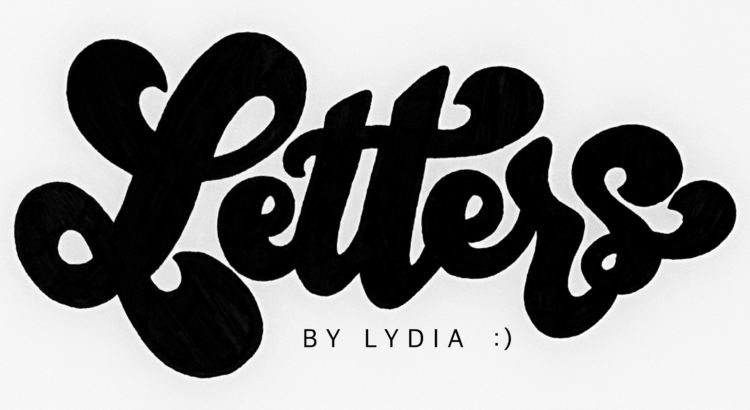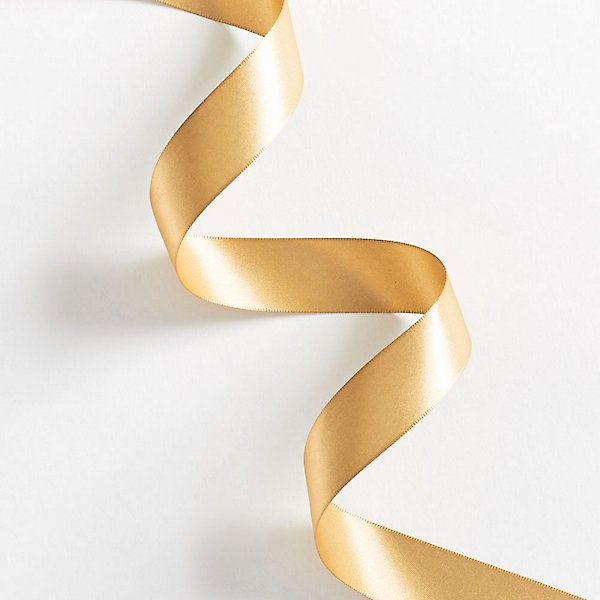Welcome back to another post! Today is all about faux calligraphy, so let’s start by explaining what that even is.
Faux calligraphy got its name by, as you might have guessed, being a sort of “fake” form of calligraphy. Where traditional calligraphy uses a brush pen to get those thin upstrokes and thin downstrokes, faux calligraphy allows you to get the same technique with a regular old pen (or, really, any sort of pencil, marker, etc that creates a standard line).

So how does this work? It’s actually pretty simple, which is why a lot of people, especially beginners, prefer it over traditional calligraphy. A lot of beginners also use it as a gateway into traditional calligraphy, because it uses the same principles without requiring the technique involved in using a brush pen.
To start, you can just write whatever word/letter/phrase you have in mind. This can be in cursive, or in print, whatever you prefer! The next step is the key: you need to identify all the downstrokes. In the example below, I showed where the downstrokes are on the cursive letter “a”, but if you want a more comprehensive guide, I have a few other blog posts about handlettering basics that should help you out! Once you identify where all the downstrokes are, you simply make those lines thicker, whether by drawing an outline and filling it in like I did, or by just adding a few extra lines around it.


Once you’ve got the basics down, this another style where there are a lot of fun variations to play around with. I included some of my favorites below, to show that you can do this with cursive or print, vary the thickness of the downstrokes, bring in color, etc. With the “lazy” and “hard” styles, the lazy one is just what you’ve been doing already (it isn’t lazy, it’s just easier than the hard version). The “hard” version is where you kind of map the downstrokes out in your mind ahead of time so that the lines don’t intersect and downstrokes remain solid white. This takes some practice to get the spacing right, which is why I called it the hard version, but it’s definitely not impossible and can be really fun to practice!

I hope you enjoy trying out a new style, or at least learning about it, and for all the umich students out there, have a great spring break!





 When it comes to actually using this technique, the first thing you need to do is make sure you’re holding the highlighter the right way. Instead of holding it like you would to highlight a something, where it draws a thick line horizontally, you want it to be the opposite way; once you’ve rotated your pen so you’re holding it correctly, it will draw a thin horizontal line and a thick vertical line. Then you can start writing! You want to keep your pen oriented that same way the whole time, because that’s what will give you this kind of 3D/layered ribbon effect. Another tip is to keep your strokes simple, especially when you’re first starting out. For example, instead of writing a lowercase “a” like you would in your normal handwriting, it might be easier to write it as a circle connected to a vertical line.
When it comes to actually using this technique, the first thing you need to do is make sure you’re holding the highlighter the right way. Instead of holding it like you would to highlight a something, where it draws a thick line horizontally, you want it to be the opposite way; once you’ve rotated your pen so you’re holding it correctly, it will draw a thin horizontal line and a thick vertical line. Then you can start writing! You want to keep your pen oriented that same way the whole time, because that’s what will give you this kind of 3D/layered ribbon effect. Another tip is to keep your strokes simple, especially when you’re first starting out. For example, instead of writing a lowercase “a” like you would in your normal handwriting, it might be easier to write it as a circle connected to a vertical line. The next step is figuring out the “layers”, so to speak. For this part, it’s super helpful to think of what an actual ribbon would look like. In this photo I got from the Papersource website, you get a really good sense of what I mean by the layers of the ribbon.When trying to figure this out with your own letters, you want to look for junctions where there’s some overlap, which I tried to illustrate in the diagrams below. For ribbon lettering, there are a ton of options in terms of style, so you can either outline the sections of each letter, color in the “shadowy” parts, or do both! I showed both examples so you can get a sense of how they each work.
The next step is figuring out the “layers”, so to speak. For this part, it’s super helpful to think of what an actual ribbon would look like. In this photo I got from the Papersource website, you get a really good sense of what I mean by the layers of the ribbon.When trying to figure this out with your own letters, you want to look for junctions where there’s some overlap, which I tried to illustrate in the diagrams below. For ribbon lettering, there are a ton of options in terms of style, so you can either outline the sections of each letter, color in the “shadowy” parts, or do both! I showed both examples so you can get a sense of how they each work.
















